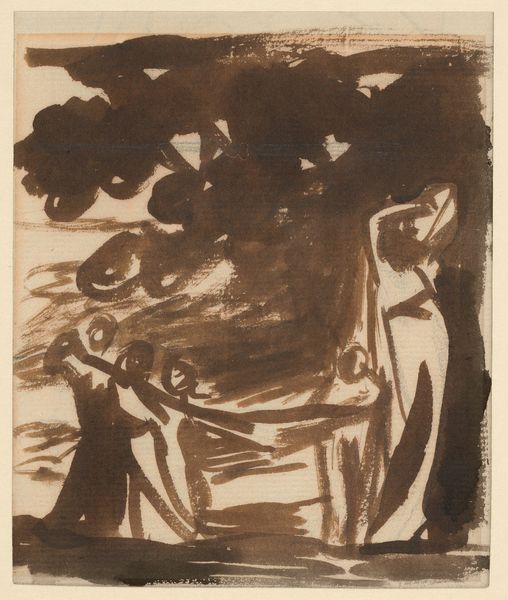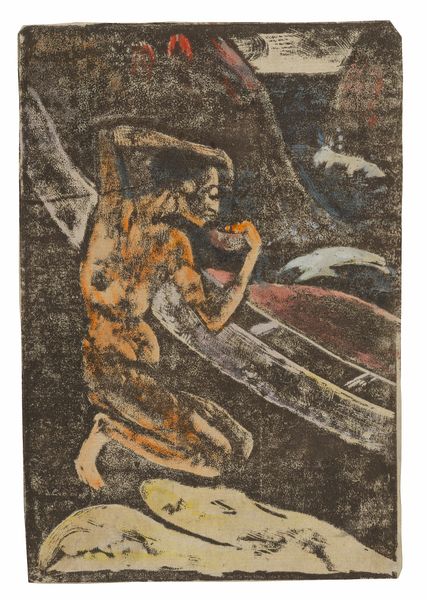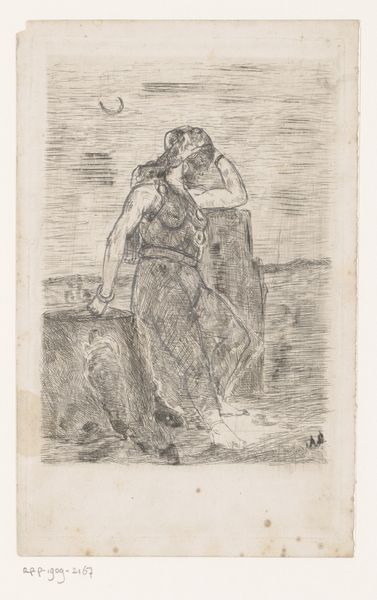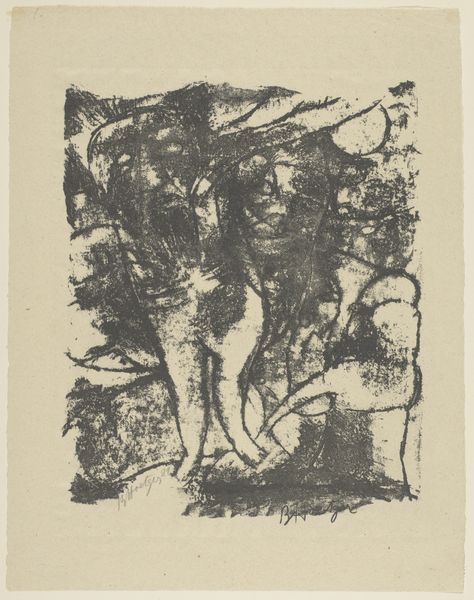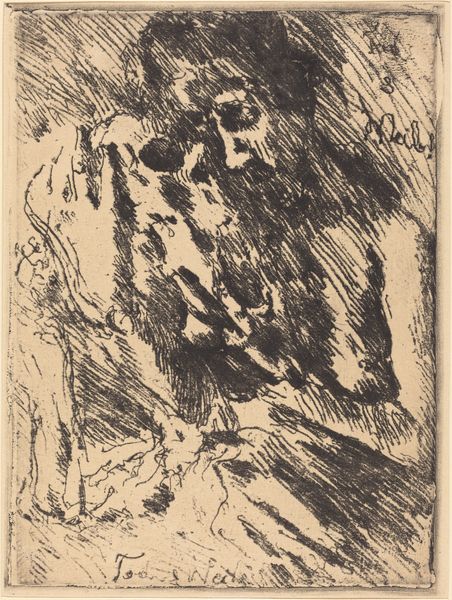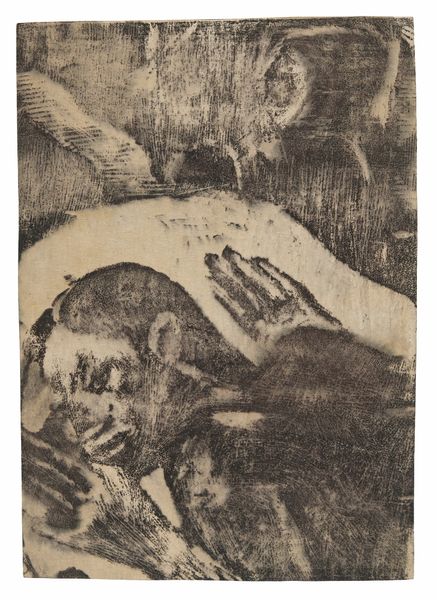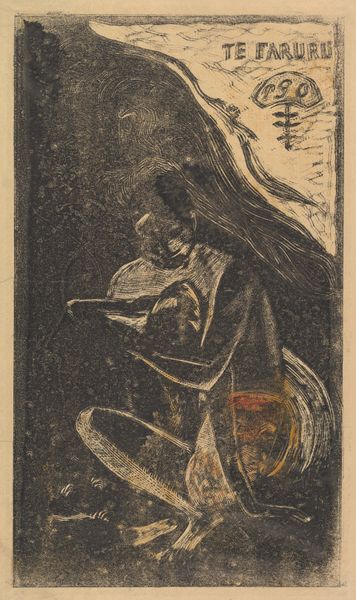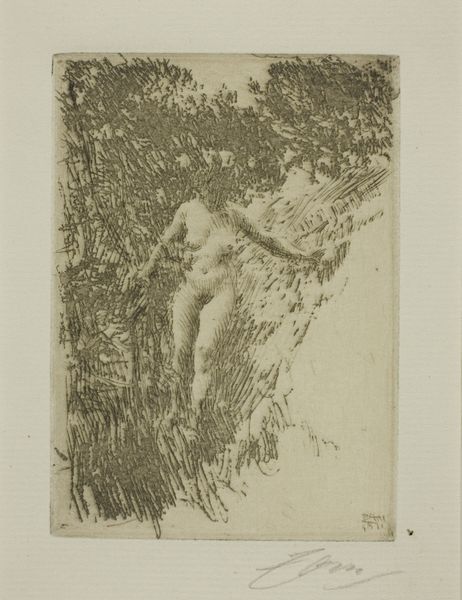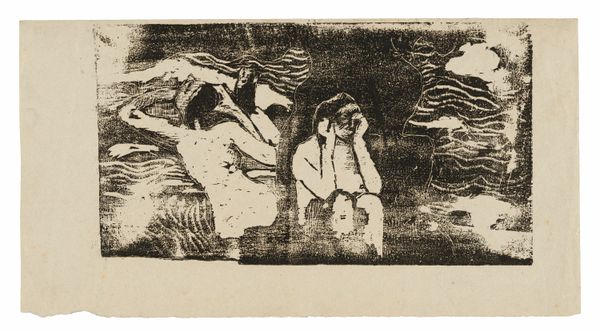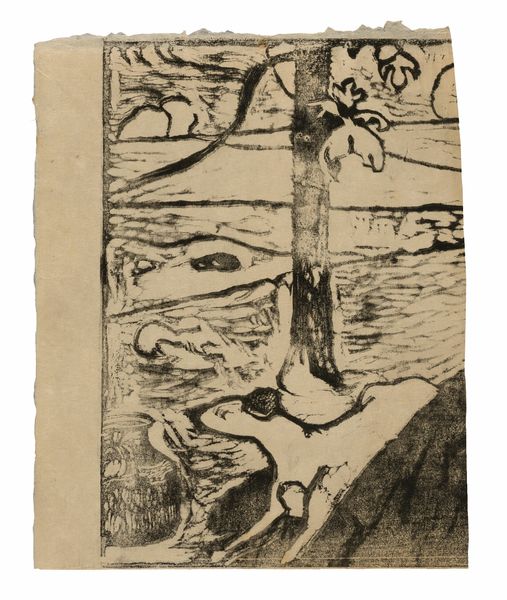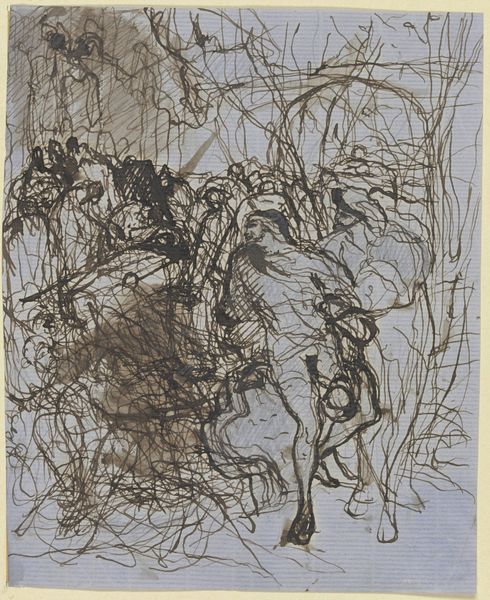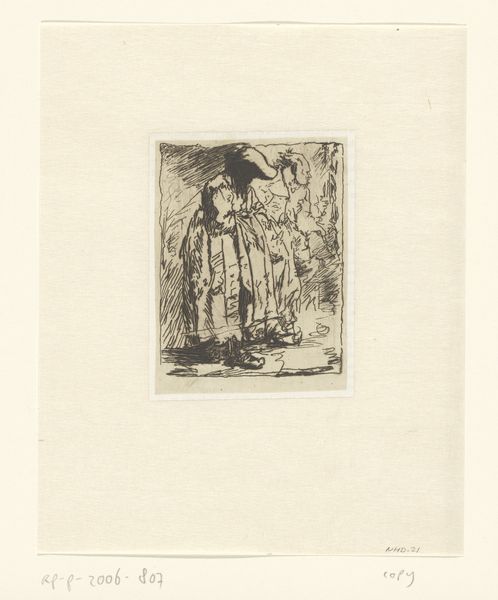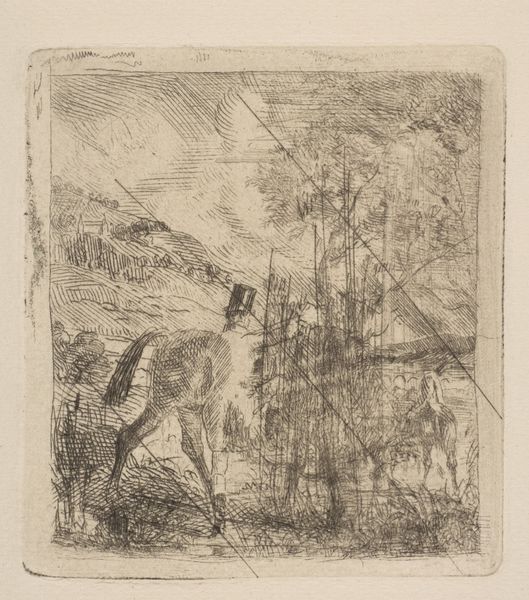
Dimensions: 221 × 131 mm (image/primary/secondary support)
Copyright: Public Domain
Curator: This is Paul Gauguin's "Maori Woman in the Forest," created between 1894 and 1895, and held here at the Art Institute of Chicago. It's an etching in ink on paper. Editor: Immediately, I'm struck by how Gauguin uses light and shadow, that strong chiaroscuro. There's an almost ghostly presence to the woman and her surroundings. Curator: Yes, the etching process allowed him to build up those rich dark tones. And consider the materials themselves—the paper, the ink—were not merely neutral supports. They were commodities embedded in a global economy shaped by colonialism, just as Gauguin's subject matter was shaped by that history. Editor: Precisely. Gauguin’s image-making is inextricably tied to colonial narratives and the construction of the “other.” The "Maori Woman" becomes an object of his gaze. How does she and her surrounding land serve his narrative, or, more provocatively, distort her lived reality? Curator: Well, the method of etching allows for a particular kind of reproducibility, contributing to the distribution and therefore the consumption of these images and, frankly, a Western-centric vision of Polynesian life. The texture of the paper itself adds a tactile quality. Editor: Agreed, but isn’t it problematic that the texture, the very materials used, can obscure the individual’s humanity, reducing her to a surface, an exotic object? The artistic choice in deploying these etching techniques directly influence this discourse. How might we, or even indigenous artists of today, use those same materials in more constructive ways to build the narrative around their subjectivity, identity, gender, and race? Curator: It makes me think about the labor involved—Gauguin's labor in creating the etching, yes, but also the often-unacknowledged labor involved in the extraction of raw materials required to create that etching. Editor: Ultimately, this etching offers more than a snapshot; it is a complex artifact reflecting not just artistry but also societal power dynamics, identity, and colonial enterprise. Curator: It prompts one to reflect upon the production and consumption of such imagery. The very act of making this a multiple allows Gauguin to reach wider audiences that might reflect on such colonial realities. Editor: I suppose, in some ways, grappling with these legacies is essential if we wish to learn and do better with art today.
Comments
No comments
Be the first to comment and join the conversation on the ultimate creative platform.
